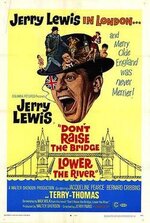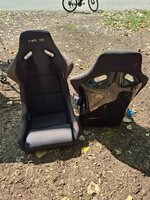69427
The Artist formerly known as Turbo84
IIRC the stock fuel tank in my car is 16 gallon capacity (and twenty something pounds empty IIRC). I've been kicking around for a while the possibility of fitting an 8 to 10 gallon tank from a junk car somewhere and adapting it to mine. The smaller tank should be lighter and smaller in size, which would hopefully allow mounting it on the passenger side of the frame centerline. This would improve L/R weight ratio (but obviously "worsening" F/R weight ratio, but I'll gladly take the hit when reducing total vehicle weight), and reduce lateral weight transfer due to fuel slosh in the corners.
I made a "spa day" at the local Pik-N-Pull today to see what I could find, and pretty much struck out. All the compact cars I could crawl under had pancake shaped tanks, while the Corvette tank is shaped like a big stick of butter. Ideally I was hoping to find a tank that was about 12" by 12" by 15-18" long. I'm not terribly encouraged at the moment, but I'll keep looking.
Another item that may not work out is replacing my aluminum coolant expansion tank with a newer plastic piece. On a slow day sometime I might pull the tank and see what the empty weight of that thing is, and than take my small scale with me on the next trip to the junkyard to compare weights. Until somewhat recently I had a damaged spare aluminum expansion tank, and I had planned on cutting the tank vertically in half at the middle, and then welding a new vertical wall there, reducing the weight and coolant volume. But, it has disappeared during one of my moves the past decade, so scratch that plan.
I made a "spa day" at the local Pik-N-Pull today to see what I could find, and pretty much struck out. All the compact cars I could crawl under had pancake shaped tanks, while the Corvette tank is shaped like a big stick of butter. Ideally I was hoping to find a tank that was about 12" by 12" by 15-18" long. I'm not terribly encouraged at the moment, but I'll keep looking.
Another item that may not work out is replacing my aluminum coolant expansion tank with a newer plastic piece. On a slow day sometime I might pull the tank and see what the empty weight of that thing is, and than take my small scale with me on the next trip to the junkyard to compare weights. Until somewhat recently I had a damaged spare aluminum expansion tank, and I had planned on cutting the tank vertically in half at the middle, and then welding a new vertical wall there, reducing the weight and coolant volume. But, it has disappeared during one of my moves the past decade, so scratch that plan.


